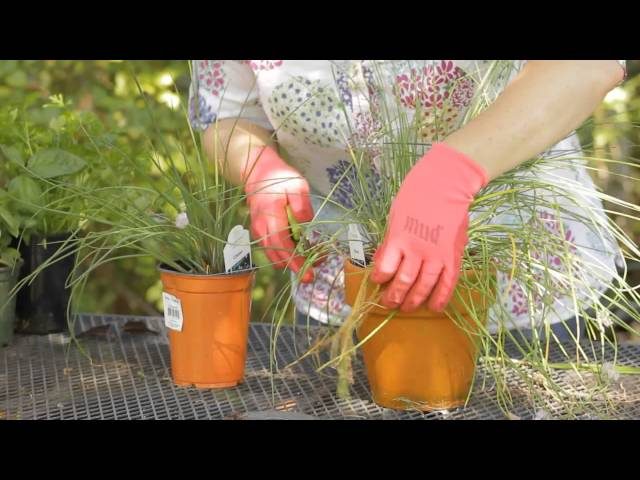Learn how to prune chives for optimal growth by following these best practices.
Checkout this video:
The Basics of Pruning Chives
Pruning chives is a simple process that can be done with just a few quick snips of the shears. Chives benefit from being pruned because it helps to promote growth and keeps the plant from becoming overgrown. It’s important to prune chives regularly to ensure that they remain healthy and continue to produce new growth.
Why prune chives?
Pruning chives is important for two reasons: to encourage new growth and to prevent the plant from going to seed. Chives are a perennial herb, meaning they will come back year after year if they are taken care of properly. Pruning chives in the summer will ensure that your plant stays healthy and continues to produce fresh growth.
There are two ways to prune chives – by cutting back the entire plant, or by pinching off individual stems. If you cut back the entire plant, you will need to wait until it has had a chance to regrow before you can begin harvesting again. For this reason, it is often best to pinch off individual stems as needed. This way, you can continue to harvest fresh chives throughout the growing season.
When pruning chives, always use clean, sharp shears or knives. This will help prevent the spread of disease and ensure a clean cut. Be sure to remove any yellow or brown leaves – these are an indication that the plant is not healthy. Once you have trimmed back your chives, give them a good watering and add some compost or fertilizer if needed. With proper care, your chives will continue to produce fresh growth all season long!
When to prune chives
Chives are best pruned in early spring, just as new growth begins to appear. You can also prune them in late fall, after the last harvest of the season. If you live in a cold climate, it’s best to wait until spring to prune your chives so that the new growth has a chance to harden off before winter sets in.
To prune chives, simply cut the plants back to about 4 inches above the ground using sharp shears. You can also remove any flower heads that appear.
How to Prune Chives
Pruning chives is a simple and easy way to keep your chives healthy and growing. By removing the dead or dying leaves, you allow more sunlight and air to reach the center of the plant. This encourages new growth and prevents the plant from becoming too crowded.
Step-by-step guide
Pruning chives is a simple process that you can do to encourage optimal growth. By pruning back the plant, you are encouraging new growth, which will result in more chives. Here is a step-by-step guide on how to prune chives:
1. Cut back the plant by about one-third using sharp shears.
2. Make sure to cut above a leaf node, which is where new growth will emerge.
3. You can either discard the cuttings or compost them.
4. Chives will regrow quickly, so you can expect to see new growth within a few weeks.
Tips and Tricks
Pruning chives is a simple matter that should be done every few weeks to keep the plant tidy, promote new growth, and prevent the formation of seed heads. You can prune chives using scissors, shears, or just your fingers.
Here are a few tips and tricks to help you get the best results:
-When cutting chives, make sure to cut them at an angle of 45 degrees or less. This will help promote new growth.
-Be careful not to cut too far back into the plant.Chives will not grow back if the leaves are cut too close to the ground.
-If you are growing chives indoors, be sure to prune them before they start to flower. Flowering sends energy away from the leaves, which can result in a less flavorful herb.
-Pruned chives can be used in a number of different dishes. They make a great addition to salads, soups, and potato dishes.
What to Do with Pruned Chives
Chives are a perennial herb in the onion family. They have a mild onion flavor and are commonly used as a fresh culinary herb. Chives are very easy to grow and can be grown in most any type of soil. They are a low maintenance herb and only need to be pruned a few times a year.
Chive pesto recipe
Here’s a delicious way to use all of those chives you just pruned! This chive pesto recipe is great on pasta, chicken, fish, or vegetables.
Ingredients:
-1 bunch chives, finely chopped
-1/2 cup olive oil
-1/4 cup Parmesan cheese, grated
-1 garlic clove, minced
-Salt and pepper to taste
Instructions:
1. Combine all ingredients in a food processor or blender and blend until smooth.
2. Taste and adjust seasoning as necessary.
3. Serve immediately or store in a jar in the refrigerator for up to 2 weeks.
Chive blossom vinegar recipe
To make chive blossom vinegar, you will need:
-1 cup chive blossoms
-1 cup white vinegar
-1 tablespoon sugar
-1 teaspoon salt
Pick the chive blossoms early in the morning. Rinse them gently and pat them dry with a paper towel. Place the chive blossoms in a sterilized glass jar.
In a small saucepan, heat the vinegar, sugar and salt until just warm and the sugar has dissolved. Pour the mixture over the chive blossoms, making sure all of the blossoms are covered. Screw on the lid and store in a cool, dark place for 2-3 weeks.
After 2-3 weeks, strain the mixture and pour it into a clean glass bottle. The vinegar will keep for up to 6 months.

